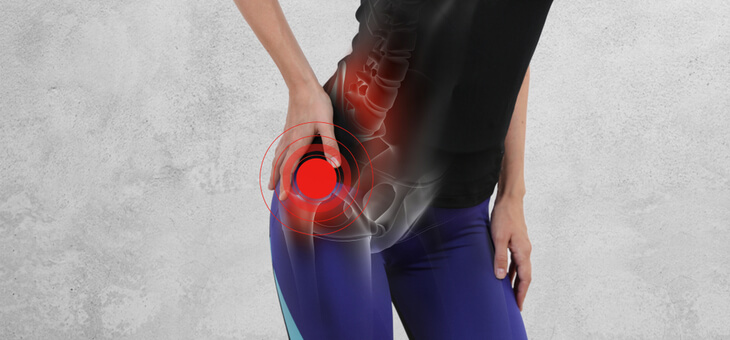As we age, hip fractures become one of the most common types of bone injury and surgery is often needed to fix them.
Approximately 20,000 hip fractures occur each year in Australia and New Zealand, with 5 per cent of people dying in hospital because of this injury.
A broken hip may occasionally be left to heal without surgery. For example, if the ends of the broken bone are impacted, or were pushed together due to extreme force from an accident or fall, the bone can heal naturally.
If this is the case, the patient is typically prescribed medication, bed rest, and physical therapy for a few weeks to allow healing.
Read: How hip replacement surgery has advanced
However, most hip fractures are treated with surgical intervention. Here are some simple things you can do to support a smooth recovery.
Get moving as soon as possible
The best way to recover from a hip fracture is to get moving as soon as possible. Immobility opens the door to the possibility of significant complications.
The Hip Fracture Care Clinical Care Standard recommends a person with a hip fracture is offered the opportunity to sit out of bed and start walking the day after surgery and at least once a day thereafter.
However, the 2021 Australian and New Zealand Hip Fracture Registry (ANZHFR) Report into the recovery process after a hip fracture reveals a significant difference in care for patients across hospitals in the region.
Professor Jacqueline Close, co-chair of ANZHFR, said early walking aims to restore movement and to reduce postoperative complications, but the report reveals substantial differences between hospitals in whether this is achieved.
“We have seen a huge difference between hospitals and their performance on this aspect of care. Some hospitals are getting over 90 per cent of patients out of bed and starting that recovery process the day after surgery, whilst in other hospitals it is as low as 20-30 per cent.
“The results show that there is work to be done to better understand why this variation exists between hospitals, as getting people moving after a hip fracture is key to achieving what is important to our patients – getting home and being independent,” she said.
Remember, once you are home and independent, it’s important not to take on too much too soon. You will heal best when you take good care of yourself, eat a variety of healthy foods, and don’t smoke.
Diet
By the time you leave the hospital, you will probably be eating your normal diet. If your stomach is upset, try bland, low-fat foods such as plain rice, broiled chicken, toast, and yoghurt. Your doctor may recommend that you take iron and vitamin supplements.
Drink plenty of fluids to avoid dehydration and try to eat as healthily as possible. Watch your portion sizes and limit treats to avoid gaining weight. Too much weight puts more stress on your hip joint.
Your doctor may advise you to take calcium supplements and eat foods high in calcium, such as milk, cheese, ice cream, and salmon to support your bones. Orange juice and soy milk with added calcium are also good choices.
Exercise
Avoid vigorous exercise for 12 weeks or until your doctor has given you the okay.
Your rehabilitation program will include a number of exercises to do. Ensure you keep up with the program and do all exercises your therapist recommends.
Read: Ease hip pain and increase flexibility
Home life
Rest when you feel tired but don’t stay in bed all day; mobility is key to recovery.
Sleep on your back with your legs slightly apart or on your side with a pillow between your knees for about six weeks or as your doctor tells you. Don’t sleep on your stomach or affected hip.
Returning to work
Most people can return to sedentary jobs between six weeks and three months following surgery. If your job involves bending, heavy lifting or operating machinery, it’s unwise to return too quickly as it could impact your recovery.
If in doubt, discuss it with your doctor to get the all-clear.
Driving
If possible, get into the car from a flat area such as a driveway or road, rather than from the footpath. This makes the car seat higher and helps you to lower yourself gently onto the seat.
Remember to bend your operated leg only as much as is comfortable but no more than 90 degrees.
You may not be able to drive for up to six weeks following your surgery. Discuss your return to driving with your doctor so they can give you the go-ahead.
Before you return to driving, you need to be able to get in and out of the car safely and control the vehicle in an emergency.
Read: Surgery-free pain relief for hips and knees
Follow-up care is a key part of your treatment so be sure to go to all appointments and keep your doctor up to date on any problems or issues. It’s also a good idea to know your test results and keep a list of the medicines you take.
Have you had a hip operation? How was your recovery? Why not share your experience in the comments section below?
If you enjoy our content, don’t keep it to yourself. Share our free eNews with your friends and encourage them to sign up.
Disclaimer: This article contains general information about health issues and is not advice. For health advice, consult your medical practitioner.

